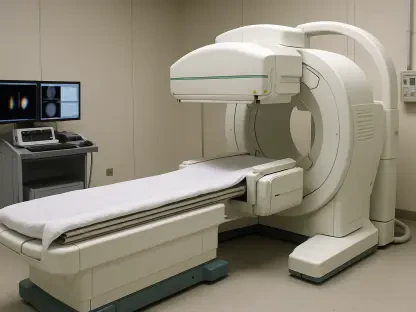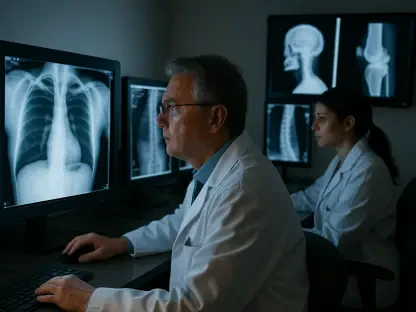Recent advancements in cardiac imaging have brought to light a critical insight: subtle changes in the heart’s right ventricle could serve as an early warning sign for heart failure, a condition affecting millions worldwide. A groundbreaking study has demonstrated that specific strain metrics, assessed through cardiac MRI, offer a powerful way to predict the risk of heart failure in the general population. This discovery could reshape how clinicians approach early detection and risk stratification, potentially saving countless lives by identifying at-risk individuals before symptoms become severe. By focusing on the right ventricle—a chamber often overshadowed by its left counterpart—researchers have uncovered a new dimension in cardiovascular health assessment. This development signals a shift toward more precise and proactive strategies in managing one of the leading causes of morbidity and mortality globally, emphasizing the importance of advanced imaging in modern medicine.
Unveiling New Prognostic Tools in Cardiac Health
Exploring Right Ventricular Strain Metrics
A comprehensive study involving over 45,000 participants from the United Kingdom has shed light on the predictive power of right ventricular (RV) strain metrics in foreseeing heart failure. With a mean participant age of 65 years and a follow-up period spanning several years, researchers meticulously analyzed cardiac MRI data to assess parameters such as RV global longitudinal strain (GLS), global circumferential strain (GCS), and global radial strain (GRS). The findings were striking: lower absolute values of RV GLS and RV GCS were associated with a significantly heightened risk of heart failure, with hazard ratios indicating a 34% and 37% increase, respectively. Even more compelling was the link with RV GRS, which showed a 71% higher risk. These metrics emerged as independent indicators, suggesting that RV strain could reveal early dysfunction not captured by traditional measures like ejection fraction. This insight positions RV strain as a vital tool for clinicians aiming to identify at-risk patients well before clinical symptoms manifest.
Implications for Early Detection Strategies
The potential of RV strain metrics to transform early detection protocols cannot be overstated. Unlike conventional assessments that may miss subtle impairments, the detailed analysis provided by cardiac MRI offers a window into preclinical changes in RV function. The study highlighted that reduced RV GLS, even after adjusting for multiple variables, remained a significant predictor, correlating with a 16% higher likelihood of heart failure. This suggests that integrating strain measurements into routine imaging could enhance risk stratification, particularly for populations under increased cardiovascular stress. Such an approach mirrors the clinical use of established markers like tricuspid annular plane systolic excursion (TAPSE), but with greater sensitivity to early deterioration. By adopting these metrics, healthcare providers could prioritize preventive interventions, potentially reducing the burden of heart failure through timely and targeted management strategies tailored to individual risk profiles.
Advantages and Challenges of Advanced Imaging
Superiority of Cardiac MRI in Strain Assessment
When it comes to evaluating RV strain, cardiac MRI stands out as a superior method compared to more commonly used techniques like echocardiography. While echocardiography remains widely accessible, it often falls short due to patient-specific factors and operator dependency, which can lead to inconsistent measurements and poor visualization of the heart’s structures. Cardiac MRI, on the other hand, delivers high-quality images with remarkable clarity, minimizing variability between operators and ensuring reproducibility of results. This precision makes it an ideal tool for assessing nuanced RV strain parameters, providing clinicians with reliable data to inform prognostic assessments. The enhanced accuracy of MRI could lead to better-informed decisions in clinical settings, offering a clearer picture of a patient’s cardiovascular health and enabling more confident predictions about future heart failure risks.
Addressing Limitations and Future Needs
Despite the promising capabilities of cardiac MRI in assessing RV strain, several limitations must be acknowledged to ensure its broader applicability. The study revealed challenges such as the lack of detailed information on the specific causes or severity of heart failure events among participants, which could affect the interpretation of results. Additionally, the cohort’s limited ethnic diversity and the use of a single type of MRI scanner raise concerns about the generalizability of findings across varied populations and imaging systems. These gaps underscore the necessity for further research to validate RV strain metrics in diverse settings and with different equipment. Overcoming these hurdles will be crucial to integrating strain assessments into standard clinical practice, ensuring that the benefits of advanced imaging are accessible to all patients, regardless of demographic or technological constraints, while addressing practical barriers like cost and availability.









